So go to the stars
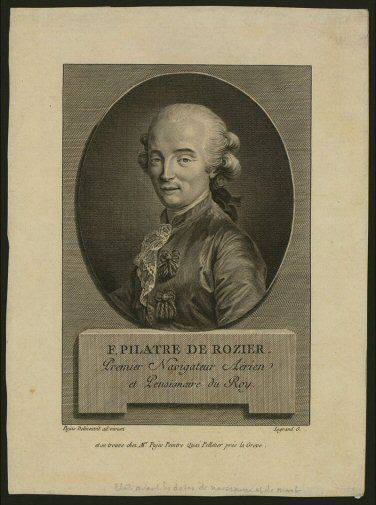
Pilatre de Rozier was born in Metz 30 in March of 1756. Wishing him to become a surgeon, his parents sent him to study at a local hospital. Quickly realizing that medicine is not his vocation, the young man leaves the hospital and gets a job at a pharmacy where he could perform various experiments, and studies physics on his own. Then he moves to Paris and opens a course of public lectures on physics there. Soon, he attracted attention as a talented experimental scientist, and was appointed keeper of the physico-chemical cabinet belonging to the brother of the king.
Pilatre de Rozier decided not to give up - the idea to fly in a balloon completely captured him. Having sufficient connections in the Academy of Sciences, and having enlisted the support of the Montgolfier brothers, he achieved the allocation of a small amount of money for the construction of an experienced balloon, on which it was possible to make leashes. October 10 such a ball was made. It was oval in shape, its height was about 24 m, its largest diameter was 15,5 m, and its volume was 2358 м3. To accommodate the pilot, a gallery made of grapevine was attached to the ball. It was about a meter wide, and on the outer perimeter it was surrounded by a sideboard also about a meter high. In the hole, located in the middle of the gallery, a wire basket was inserted, which served as a hotbed for burning straw or other combustible material. The balloon was richly decorated with monograms and emblems.
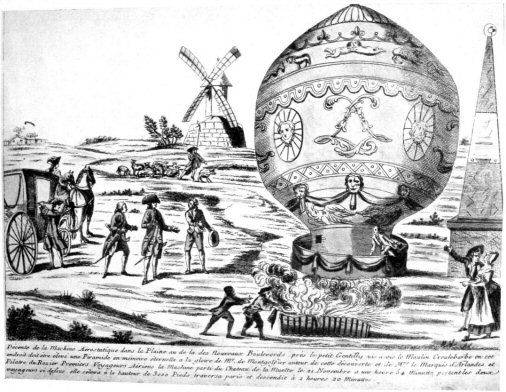
On Wednesday, October 15, Pilatre de Rosier made the first stories lifting on a leash. According to him, while he did not feel any inconvenience. In this experiment, the thesis of some scientists who argued that as the “gas” cooled, the rate of descent would be excessive and dangerous for an aeronaut was refuted. However, the ball landed so softly that its shape did not even change. And when Pilatre de Rosier jumped out of the gondola, the device rose a meter from the ground. Joseph and Etienne Montgolfier prepared a report on this matter and sent it to the Academy of Sciences. In particular, it said: “... being in the gallery of the new balloon, Pilatre de Rosier was raised to a height of approximately 32,5 m, where he was held (for 4 mines 25 seconds - Auth.) With tethers. It seemed to us that he feels himself the master of the situation, now going down, now climbing on the ball, depending on the magnitude of the flame that he kept in the hearth. ”
On Friday, October 17, the experiment was repeated with a large crowd of people. The excitement of the public was enormous. Pilatre de Rozier rose to the same height, but the wind was so strong that the ball began to beat to the ground, and it was urgently lowered. Further attempts to lift had to stop.
19 October 1783, at half past four, in the presence of two thousand spectators, the apparatus was filled with "gas", and Pilatre de Rozier took his place in the gallery. This time, the ascent was carried out to a height of 70 m, where Pilatre de Rozier remained for six minutes without keeping fire in the firebox, and then softly landed. After a while, Pilatre de Rozier went up a second time.
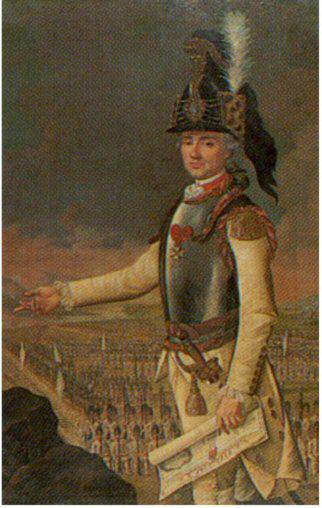
The Montgolfier brothers wrote: “The experience that took place next Sunday proved with even more convincing the ability to regulate the movement of a balloon up and down. To eliminate unnecessary burdens, the part of the gallery on which Pilatr was located was removed, and a basket with a load was attached to the balance from the opposite side (50 kg - Auth.). The ball quickly rose to the height that the length of the ropes allowed (23,8 m. - Auth). After holding on to it for some time (8,5 min. - Auth.), He began to descend due to a cease-fire. At that moment, a gust of wind carried the ball to the trees of the neighboring garden; Pilatr resumed fire at the same time, and when it was possible to free the ropes that held him, the ball quickly rose, and without the slightest difficulty was transferred to Revelon’s garden. ”
The length of the ropes was increased, and the balloon was prepared for the ascent again. This time, Pilatre de Rozier took with him a passenger - the physicist Giroud de Villiers, who became the second person in the world to climb a tethered balloon. Giraud de Villiers recalled: “within a quarter of an hour I climbed to the height of 400 feet, where I was about six minutes. My first impression was the excitement of the skillful actions of a companion. His knowledge, courage and agility in dealing with the furnace have led me to admiration. Then I began to contemplate the boulevard from the gate of Saint-Antoine to Saint-Martin, strewn with people who seemed to me a bright colored stripe. Looking into the distance, I noted that Montmartre is below us. It’s a pity that I didn’t take the telescope with me. ”
“Encouraged by the results,” wrote the Montgolfier brothers, “who eliminated the thought of the danger of such experiments, the physicist Giroud de Villiers and Major Laur marquis d'Arland consistently stood in the ball. It should be noted that in these experiments, the balloon rose to a height of 125 m, i.e. one and a half times higher than the towers of the Cathedral of Notre Dame, and that Mr. Pilatre de Rozier, thanks to his energy and dexterity, perfectly controlled the firebox, forcing the ball to rise, then descend to contact with the ground and rise again, in a word, informed him of the movements that he I wanted to.
Francois-Laur d'Arland was born in 1742 in a noble family living on his estate in Vivare, 25 km from Annon. Enrolled in Jesuit College de Tournon, he becomes acquainted with the young Joseph Montgolfier. Soon this acquaintance develops into a real friendship.
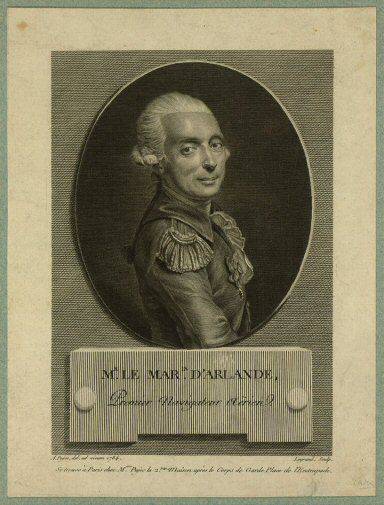
After graduating from college, Francois Laur's parents elect a military career for him, and the young man leaves for Calais, where his military unit was located. He wants to go to the New World, but the highest interests of the family and poor health prevent this aspiration, although his brothers leave for the ocean.
At the age of thirty-eight, with the rank of Major Francois Laur, he resigned and settled in Paris. Here he enjoys astronomy and physics, often meets with Lavoisier and Franklin. It was a real shock for him to learn that a childhood friend, Joseph Montgolfier, launched a balloon in the sky close to Annon.
Feeling self-confidence, having “tasted the sky,” Pilatre de Rozier began to press for free air on a balloon with even greater persistence. Mongolf in this matter took a wait and see attitude, not taking responsibility for the pilot's life, and the Academy of Sciences obsequiously expected a signal from the king. Louis XVI, feeling the hesitation of the inventors of the balloon, and not wanting to risk the lives of his loyal subjects, was in no hurry to make a decision, watching from the side the ensuing discussion of supporters and opponents of this idea. In the end, he agreed as an experiment to send two criminals convicted of the death penalty to flight, promising to pardon them in the event of a favorable outcome of the case.
Understanding perfectly the importance of the upcoming event, Pilatre de Rozier was deeply indignant at the decision of the king to entrust this historical mission to criminals. He stated that “people thrown out of society” are not worthy of the honor of being the first aeronaut. The position of Pilatra de Rosier was actively supported by the Marquis d'Arland. Being in the highest circles of society, he decided to act through the Duchess of Polignac, the educator of the “children of France,” who was known for her advanced views and had a great influence at court. She treated the Marquis’s request with understanding and arranged for him an audience with Louis XVI, at which d'Arland, convincing the king of flight safety, proposed her candidacy as Pilattre de Rozier's satellite.
Joseph and Etienne Montgolfier, surprised to learn that criminals should fly on their apparatus, cast off their doubts and publicly expressed their protest. At the same time, the heir to the king joined the case, who really wanted the balloon to be lifted from his estate. The king could not withstand the friendly pressure and allowed the flight Pilatru de Rozier and the Marquis d'Arland. The launch date was set for November 21 1783.
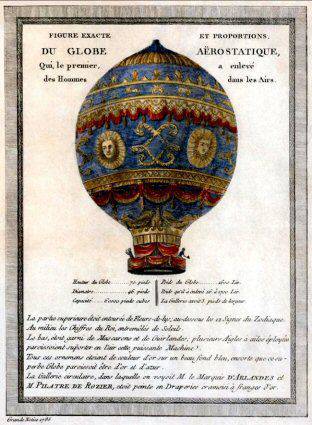
The balloon was built at the Revelon factory. The design and manufacturing technology have been tested and no doubt. The device had an ovoid shape, its height was 21,3 m, and the maximum diameter was 14 m. From below the balloon ended with a sleeve with a diameter of 5 m, to which a gallery made of willow vine was attached, and a metal hearth suspended on chains. The surface of the balloon was decorated with monograms, faces of the sun and various emblems of the greatness and glory of France.
November 21 balloon was delivered to the small castle of La Muett young dauphin, located in the western part of Paris in the Bologna forest, and prepared for launch. It is appropriate here to give an excerpt from the novel by the famous science fiction writer of our time, Ray Bradbury, “Icarus Montgolfier Wright”: it was filled with the blinking current of heated air rising above the fire. Silently, like a dormant deity, this light envelope bent over the fields of France, and everything straightens, spreads, filled with red-hot air, and will soon break loose. And with her, his thought and the thought of his brother will ascend into the blue, silent expanses and float, silent, undisturbed, among the cloudy expanses, in which still untamed lightning sleep. There, in the depths, not marked on any map, in the abyss, where neither a bird song nor a human cry can reach, this ball will find peace. Perhaps, in this voyage, he, Montgolfier, and with him all the people will hear the incomprehensible breath of God and the solemn tread of eternity. ”
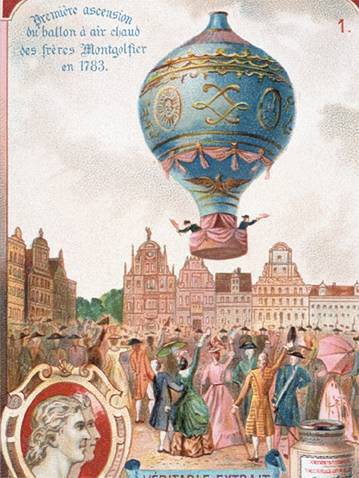
The start was given at noon with a completely unthinkable concourse of people, it seemed the whole of Paris and its environs gathered to watch this incredible event. When the ball was already in the air, but still on a leash, the old story repeated, a strong gust of wind tore the shell in its lower part. I had to pull the balloon to the pedestal for repair, which delayed its departure by almost two hours. Finally, at 1.54 in the afternoon, the balloon with the pilots on board was freed from the leash and went up.
The picture of the free flight of people was so fantastic, incredible, not fitting in the head, that the crowd, as if afraid to scare this vision, frozen in some kind of mystical horror, silently watched the balloon move away. Old Marshal Villerua, who followed the experience from her bedroom window, sighed sadly: “Well, it's clear! In the end, they will reveal the secret of immortality. Only I will die by then! ”
This is what Marquis d'Arland wrote in his letter to Faugues de Saint-Fonds, recalling the events of that flight: “We went up on November 21 1783 in about two hours. Mr. Rosier is located on the western side of the balloon, and I - on the eastern side. A northwest wind blew. The car, as I was later told, rose majestically, and turned in such a way that Mr. Rozier was ahead in the direction of travel, and I was in the rear.
I was surprised by the silence and lack of movement that prevailed among the spectators, probably embarrassed by a strange spectacle in which they could not believe. I was still gazing down when Mr. Rozier heard a cry:
- You do not do anything, and the ball does not move!
“Forgive me,” I replied, and quickly threw a bundle of straw into the fire, slightly moving it. Looking down, I saw that La Muett was already out of sight, and to my surprise, we hovering over the river.
- Passy, Saint-Germain, Saint-Denis, Chevreuse! - I shouted, recognizing familiar places.
“If you stare down and do nothing, then we will soon swim in this river,” was heard in response, “add fire, my dear friend, add fire!”
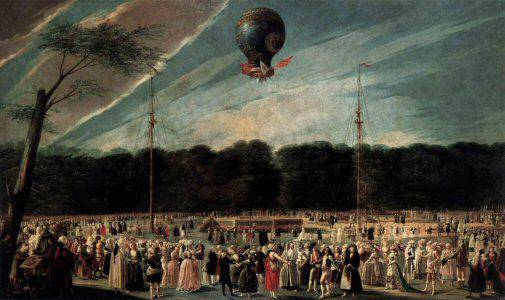
We continued our journey, but instead of crossing the river, we began to slowly demolish in the direction of the Palace of Invalides, then we again returned to the river, then turned to the Palace of Congress.
- It is very difficult to cross the river - I noticed my companion.
“It only seems that way,” he answered, “but you do nothing for it.” I assume that you are much braver than me and are not afraid to tumble from here.
I quickly prevented the fire, then grabbed the pitchfork, threw another batch of straw at it, and felt how we were drawn to the skies.
“Finally, we began to move,” I said.
“Yes, we are flying,” my companion answered.
At that moment, a sound was heard on top of the balloon, the character of which left no doubt that something had exploded. I tried to make out this place, but could not see anything. My companion, also attempted to consider the place where the sound came from. Suddenly, I felt a push, but did not understand its origin, as I kept looking up. The ball began to slowly decline.
- Are you out there dancing? - I shouted to my companion.
“I'm standing still,” was heard in response.
- Good. I hope it was a gust of wind that would take us away from the river - I said. Looking down to determine where we were, I found that we were swimming between the Military School and the Palace of the Disabled.
“We are making progress,” Mr. Rosier said.
- Yes, we travel.
- Let's work, let's work! - said Mr. Rosier.
There was another unpleasant sound that I assumed was like a rope breaking. This thought made me scrutinize the inside of our house. What I saw did not make me happy - the southern part of the ball was full of holes of different sizes.
- We have to go down! - I shouted.
- Why?
- Take a look! - I replied and grabbed a wet sponge to extinguish a small fire, which was seen in one of the holes, within my reach. To top it off, I saw that the fabric began to fall behind the farm wrap.
- We must go down! - I repeated.
He looked down.
- We are over Paris! - said Mr. Rosier
“It doesn't matter,” I replied. “Just look!” Is it dangerous? Do you hold well?
- Yes!
I once again investigated my side and made sure that there was nothing to fear yet. Wet sponge walked through all the ropes, to which he could reach. They were all well secured on the ball farm. Only two of them broke off.
“We can cross Paris,” I said confidently.
During all this time, we quickly flew over the rooftops. Adding a fire in the firebox, we easily went up. I looked down and it seemed to me that we were moving in the direction of the towers of Saint-Sulpe, but a new gust of wind caused the ball to change direction and carried it southwards. I looked to the left and saw a forest, which, I hoped, said that we were not far from Luxembourg (Southeast suburb of Paris. - Auth.). We crossed the boulevard when I noticed that the ball began to lose height again.
- We must go down! - I shouted.
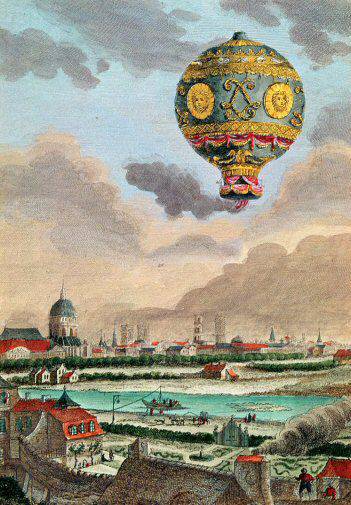
But the fearless Rosier, who never lost his head, and who knew more than I, rejected my attempt to land. I threw straw into the fire, and we went up a little. The earth was close, we flew between two factories of some kind.
Before touching the ground, I climbed onto the gallery's rail, grabbed the inclined truss with both hands, and jumped to the ground. Looking back at the ball, I expected to see it puffed up, but it unexpectedly quickly spread to the ground. I rushed to search for Mr. Rosier and saw the sleeve of a shirt, and then of him himself, who was getting out from under the pile of linen that covered my colleague. ”
During the flight, the balloon rose to an altitude of about 1000 m, stayed in the air for 45 minutes and during that time flew 9 km. The landing took place near the town of Buttes-o-Kai. Saving the balloon from the jubilant crowd, which was ready to tear the shell to pieces for souvenirs, it was quickly folded and transported to the Revelon factory where it was built.
The correspondent of the "Moscow Gazette" wrote: "They are not very tired, but very sweat from the heat and needed a change of linen. Pilatre de Rozier still needed a new frock coat, since the frock coat that he had taken on the road was torn to pieces by the spectators - in memory of the historic flight. ”
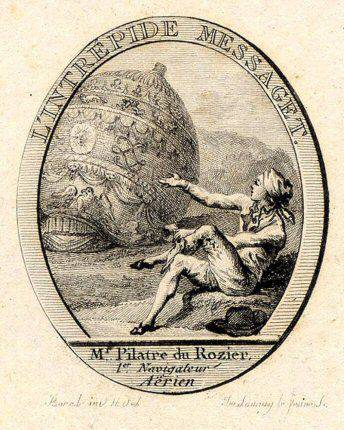
I would like to quote another curious document left by the participants of this unforgettable event: “Today, 21 in November 1783, at the castle of de la Muett, Mr. Montgolfier's aerostatic machine has been tested.
The sky was covered in many places by clouds, in others it was clear. A northwest wind blew. In 12 hours 8 minutes of the day there was a shot, announcing the beginning of the filling machine. Within 8 minutes, despite the wind, it was filled to the end and was ready to rise, since Mr. D'Arland and Mr. Pilatre de Rozier were already at the gallery. Initially, there was an intention to allow the machine to rise in a tethered state in order to experience it, to accurately determine the load it can bear, and also to see if everything is sufficiently prepared for such an important upcoming experience. But the car caught up by the wind did not rise vertically, but rushed to one of the garden passages; the ropes holding it, acting too hard, caused a multitude of sheath breaks, one of which was more than 6 feet long. The car was returned to the stage and started in less than 2 hours.
After a new filling, it was launched at 1 an hour 54 minutes past an hour ... Viewers saw it rise in the most magnificent way. When she reached about 250 feet in height, the brave travelers, taking off their hats, sent greetings to the audience. Then the audience could not resist expressions of mixed feelings of anxiety and admiration.
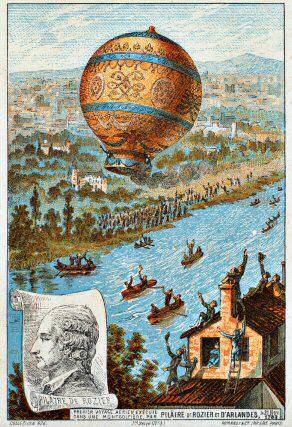
Soon the aeronauts were lost sight of. The car, hovering over the horizon and presenting the most beautiful view, climbed at least a thousand feet 3, where it remained visible as before. She crossed the Seine below the Conference outpost and, flying further between the Military School and the House of the Disabled, was in full view of all of Paris. The travelers, satisfied with this experience, not wanting to delay the flight, decided to descend, but seeing that the wind carried them to the houses of the streets of Sev, kept their composure and, giving up the gas, rose again and continued their way in the air until they flew out of Paris. There, they quietly descended into the countryside behind a new boulevard, opposite the Kulebarba mill, without experiencing the slightest inconvenience and having another two-thirds of the fuel on the gallery. They could, therefore, if they wanted to, cover the space three times the distance covered ... The latter ranged from 4 to 5 thousand tuazes, with the time 20 — 25 minutes spent on it. This machine was 70 feet tall and 46 feet in diameter; it contained 60 thousand cubic feet of gas, and the load it raised was approximately 1600 — 1700 pounds.
Done at Chateau de la Muetet at 5 hours of the evening.
Signed: Duke de Polignac, Duke de Guip, Comte de Polastron, Comte de Vodreyl, d'Yuno, B. Franklin, Foza de Saint-Von, Delille, Le Roy from the Academy of Sciences.
Among the signatories of the protocol was the famous American scientist who was visiting at that time in Paris and who attended the balloon lifting ceremony, Benjamin Franklin. When in one of the discussions he was asked: “Well, they flew, but what is the use of these balls?”, He answered this question with the question: “And what is the use of a child who was just born?”
Return to Paris was a triumph. People have already come to their senses from the shock and violently splashed out their emotions on the streets of the city.
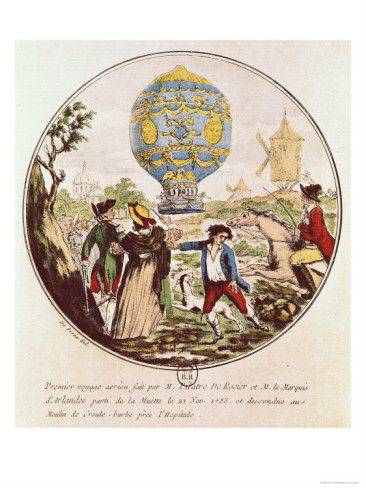
General enthusiasm that engulfed France, has spread to other countries. The press was filled with materials on the first flight of people and the prospects for the development of aeronautics. Much has been said about the advent of a new era in the history of mankind, about the destruction of borders and roads.
10 December 1783, at its meeting, the Academy of Sciences awarded Joseph and Etienne Montgolfier the rank of corresponding members, and two weeks later - awarded them a prize designed to “promote the arts and sciences”. Louis XVI awarded Etienne the Order of St. Michael, and Joseph was awarded a lifetime pension of one thousand livres. Their elderly father was granted a noble deed. On the family coat of arms of Montgolfier, the king commanded to inscribe: Sic itur ad astra - So go to the stars ...
Information